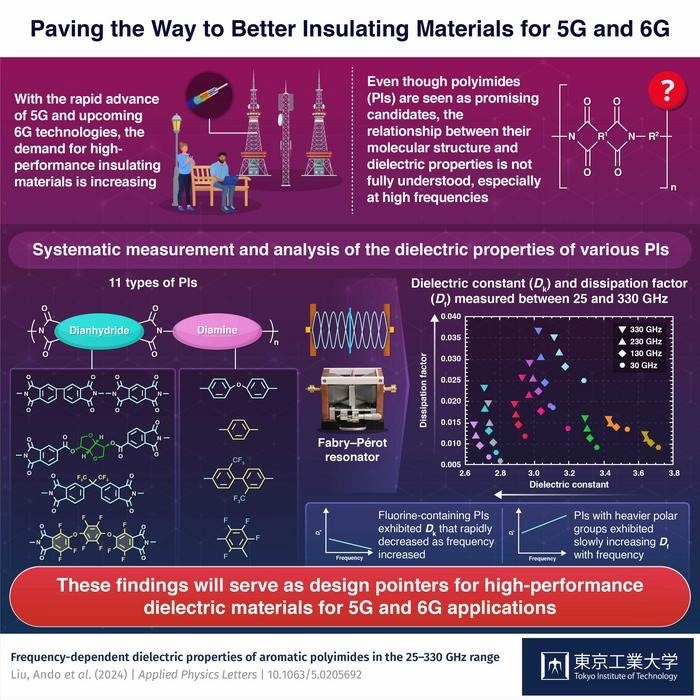Reviewed by Lexie CornerJul 29 2024
The Tokyo Institute of Technology research team has studied polyimides (PIs), which are becoming increasingly popular as materials appropriate for high-frequency operation, as alternative materials for high-end 6G. The study was published in the journal Applied Physics Letters.
 These findings will serve as design pointers for high-performance dielectric materials for 5G and 6G applications. Image Credit: Tokyo Institute of Technology
These findings will serve as design pointers for high-performance dielectric materials for 5G and 6G applications. Image Credit: Tokyo Institute of Technology
Scientists and engineers are investigating new approaches to improving 6G and 5G technologies. Operating at extremely high frequencies has several harmful impacts on wireless communications, which is one of the main issues to be addressed in both 5G and 6 G.
Maintaining signal integrity becomes increasingly difficult at frequencies close to the terahertz range, where issues like signal attenuation and interference become more noticeable.
It is possible to significantly reduce some of these problems by employing insulators with remarkable dielectric qualities. Currently, glass- and ceramic-based insulating materials are widely used, but they are not ideal for high-end 6G devices due to their high cost and complicated construction. Would materials made of polymers be a preferable substitute?
Polyimides stand out because of their excellent thermal stability, mechanical toughness, flexibility, lightweight, and favorable dielectric properties. However, the correlation between the molecular structure of PIs and their dielectric properties has not yet been fully established. Existing studies on the dielectric properties of PIs in the GHz frequency range are limited to below 60 GHz, which poses a severe hindrance to the design of pointers for next-generation dielectric PI materials.
Shinji Ando, Professor, Tokyo Institute of Technology
To close this information gap, the research team measured and examined the dielectric characteristics of 11 PIs with various molecular structure types. The only instrument now available for measuring the dielectric characteristics of thin films in the 110–330 GHz range with a low dissipation factor is a Fabry–Pérot resonator, which is what they utilized to do this.
The dissipation factor (Df) and dielectric constant (Dk) of the polyimides were determined using the resonator. Low values are essential for reducing signal loss and preserving signal integrity at high frequencies. Dk and Df are indicators of a material's capacity to store energy in various ways.
Each of the 11 PIs displayed a Dk and Df curve that was quite typical, with these values continuously decreasing as frequency increased. Notably, the Dk values of the PIs with higher fluorine concentrations were lower.
Specifically, a perfluorinated polyimide showed a much smaller Df and much lower Dk than the other polyimides, with a frequency dependency of Dk and Df. Another intriguing finding was the negative correlation observed between the rise in Df and the polar fraction, or the portion of the polymer's mass composed of polar functional groups.
The study's findings provide much-needed insight into PIs' dielectric properties. By enabling engineers to access the terahertz spectrum and overcome related problems, this data may someday open the door to quicker and more dependable telecommunications. Naturally, further work will be required to determine which kind of PIs is most appropriate for these uses.
Spectroscopic studies in the THz range will help us indirectly infer the origins of the dielectric responses of different structural PIs at high frequencies. Our findings will hopefully be beneficial for developing high-performance polymer-based insulating materials for 6G technologies.
Shinji Ando, Professor, Tokyo Institute of Technology
Journal Reference:
Liu, H., et al. (2024) Frequency-dependent dielectric properties of aromatic polyimides in the 25–330 GHz range. Applied Physics Letters. doi.org/10.1063/5.0205692.